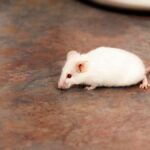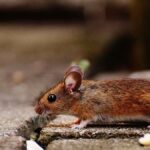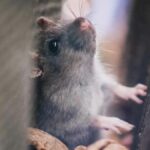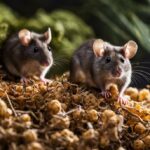Have you ever wondered what mice eat? Do they eat cockroaches?
Well, the answer is yes.
Mice do eat roaches, both German and American varieties. In fact, roaches are considered one of the top enemies of cockroaches, along with rats.
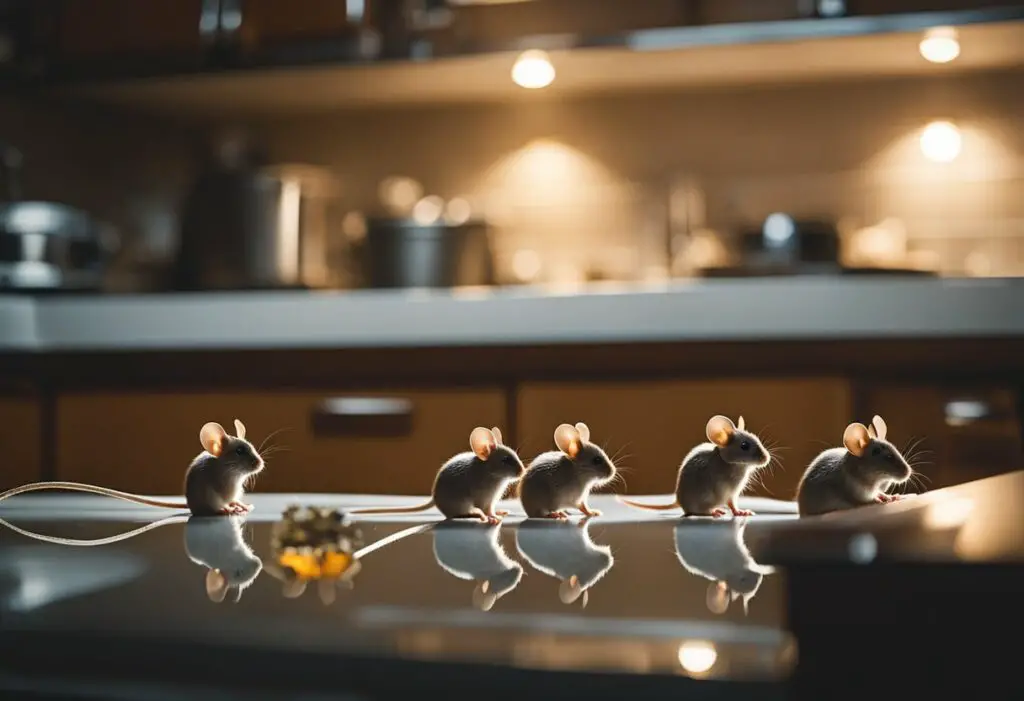
However, it’s important to note that mice should not be relied on for pest control as they can become a nuisance and carry diseases. While they may eat roaches, cockroaches are difficult for mice to catch compared to readily accessible food sources provided by humans. Mice are generally attracted to aromatic foods with high sugar, fat, or protein content. Chocolates, peanut butter, vegetation, fruits, pet food, and all sorts of meat are only some of the things that mice like to eat.
So, while mice may eat roaches, it’s not a common part of their diet. If you have a cockroach infestation, it’s best to call a professional pest control service to handle the problem.
Mice Dietary Habits
Mice are omnivorous creatures, meaning they eat both plants and animals. They have a diverse diet that includes a variety of food sources such as grains, seeds, fruits, and protein. Insects are also a part of their diet, but they are not a primary food source.
Natural Diet of Mice
In the wild, mice primarily feed on grains and seeds. They are known to be opportunistic feeders, meaning they will eat whatever food is available to them. Mice are also known to consume fruits, but only in small quantities. They are not known to be picky eaters and will consume anything that is edible.
Omnivorous Nature of Mice
Mice are omnivores, which means they eat both plants and animals. They have a keen sense of smell and are able to detect food sources from a distance. In addition to grains and seeds, mice also consume protein in the form of insects, small animals, and even carrion.
Mice are known to be opportunistic feeders and will eat whatever food is available to them. This includes insects such as cockroaches, but they are not a primary food source for mice. In fact, it is more common for mice and roaches to compete for the same food sources rather than for mice to actively hunt and eat roaches.
In summary, mice have a diverse diet that includes a variety of food sources such as grains, seeds, fruits, and protein. Insects are also a part of their diet, but they are not a primary food source. While mice can eat roaches opportunistically, it is not a common part of their diet.
Roaches as Prey

Do Mice Eat Roaches?
Mice are omnivorous creatures and can eat a wide variety of food. They are known to eat insects, such as beetles and cockroaches, as part of their diet. While mice do not primarily rely on roaches as their food source, they do eat them opportunistically. According to ABC Blog, roaches are well within a mouse’s natural diet, and they are worth the mouse’s effort to catch since they are an excellent source of both protein and fat, both macronutrients that mice need to survive.
Mice Predation on Roaches
Mice are known to be efficient predators, and they can catch and eat roaches if they come across them. However, mice tend to avoid roaches as they are fast-moving and can be difficult to catch. Several factors can influence whether mice choose to dine on roaches. These factors include the availability of other food sources, the environment, and the size and species of the roach.
Nutritional Value of Roaches for Mice
Roaches are a good source of nutrition for mice. Mice can and will eat roaches if they are starving or if other food sources are not available. Roaches are rich in protein and fat, which are essential macronutrients for mice. However, it is important to note that roaches can carry diseases and parasites that can be harmful to mice. Therefore, it is essential to control the roach population in your home to prevent the spread of disease.
In conclusion, while mice do not primarily rely on roaches as their food source, they do eat them opportunistically. Roaches are a good source of nutrition for mice, but they can also carry diseases and parasites that can be harmful to mice. It is essential to control the roach population in your home to prevent the spread of disease and to ensure the health of your mice.
Infestation Dynamics

Roach Infestation
Roach infestations can be a nightmare for homeowners. They can be difficult to control, and once they take hold, they can be challenging to eliminate. Roaches are attracted to warm, moist environments and can quickly multiply in number. They can also carry diseases that can be harmful to humans.
To prevent a roach infestation, you should keep your home clean and free of clutter. Regularly clean your kitchen and bathroom areas and keep them dry. Seal any cracks or crevices in your walls or floors, as these can be entry points for roaches. Additionally, make sure to dispose of your garbage properly and keep it in sealed containers.
Mice and Roach Coexistence
Mice and roaches are common household pests that can coexist in the same environment. While mice are known to be predators of roaches, they are not a reliable form of pest control. Mice can become a nuisance and carry diseases, making them a potential health hazard.
If you have a mouse problem, it is important to take action to eliminate them. This can be done by using traps or hiring a professional pest control service. Additionally, you should seal any entry points that mice may be using to gain access to your home.
In conclusion, preventing infestations is the best way to control pests like roaches and mice. By keeping your home clean and free of clutter, sealing entry points, and disposing of garbage properly, you can reduce the likelihood of an infestation. If you do have an infestation, it is important to take action quickly to prevent it from spreading and causing further damage.
Pest Control and Prevention
When it comes to controlling and preventing roach infestations, there are a few things you can do to keep them at bay. Here are some effective pest control strategies you can use:
Effective Trapping Methods
One of the most effective ways to control a roach infestation is by using traps. There are many different types of traps available, including glue traps, snap traps, and bait traps. Glue traps are a popular option because they are easy to use and can be placed in areas where roaches are likely to travel. Snap traps are also effective, but they can be more difficult to use and require more maintenance.
Natural Predators and Control
Did you know that mice are natural predators of roaches? While they may not be the most effective method of pest control, having a few mice around can help keep the roach population in check. If you don’t want to rely on mice, there are other natural predators you can use, such as certain types of birds and lizards.
Preventing Infestations
Preventing roach infestations is key to keeping your home free of bugs. Here are some tips to help prevent infestations:
- Keep your home clean and free of clutter.
- Store food in airtight containers.
- Seal cracks and crevices around your home.
- Use screens on windows and doors to keep roaches out.
- Eliminate sources of standing water.
By following these tips, you can help prevent roach infestations and keep your home bug-free. If you do have an infestation, it’s important to address it quickly and effectively. Humane pest control companies can help you eliminate the problem without harming the environment or putting your family at risk.
Health Risks and Property Concerns
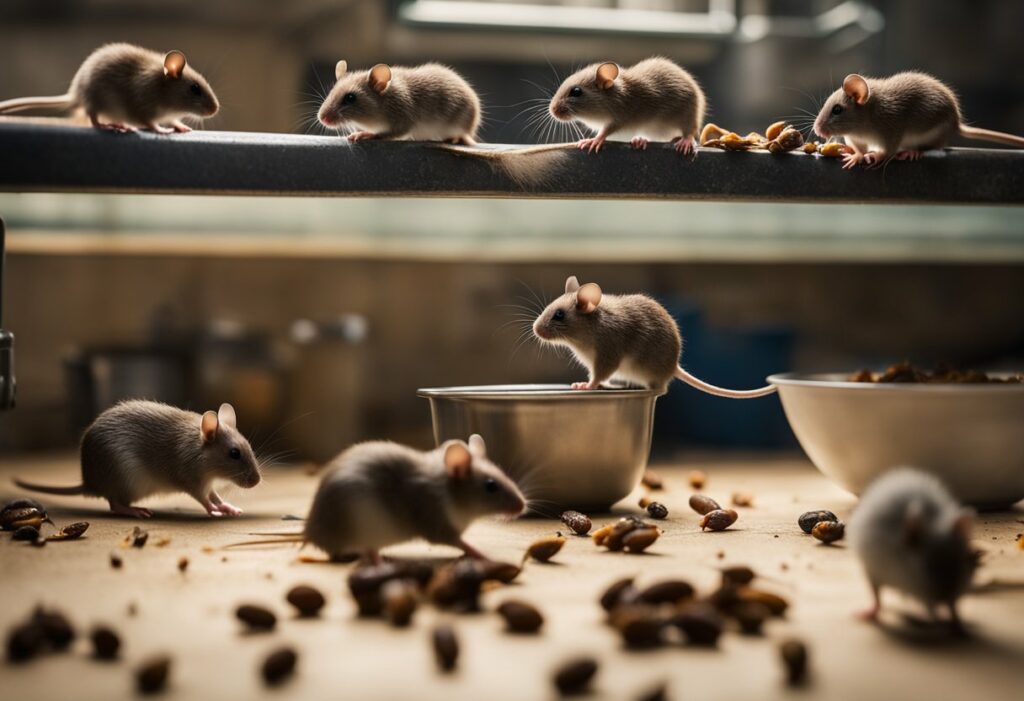
Diseases Spread by Pests
Mice and roaches are not only pests, but they can also pose significant risks to human health. Mice are known carriers of diseases such as Hantavirus, Plague, and Tularemia. Hantavirus is a severe respiratory illness that can be fatal, and it is spread through the inhalation of dust that contains mouse droppings, urine, or saliva. Plague is another disease that can be transmitted to humans through flea bites that have fed on infected rodents. Tularemia is a bacterial infection that can be contracted through handling or consuming contaminated food or water.
Roaches, on the other hand, can carry a bacterium called Lymphocytic Choriomeningitis, which can cause severe neurological symptoms in humans. Roaches can also contaminate food and surfaces with their droppings and saliva, leading to food poisoning and other illnesses.
Impact on Property
In addition to the health risks, mice and roaches can also cause significant property damage. Mice can gnaw on electrical wires, which can cause fires or damage to appliances. They can also chew through wood, plastic, and other materials, leading to structural damage. Roaches can also damage property by eating through paper, glue, and fabrics.
Furthermore, the presence of mice and roaches can also lead to unpleasant odors and unsanitary living conditions. Their droppings and urine can contaminate surfaces, leading to foul smells and the potential for mold growth. In severe cases, an infestation can lead to the need for costly repairs and professional extermination services.
Overall, it is essential to take proactive measures to prevent mice and roaches from entering your home. This includes sealing up any cracks or holes, keeping food in airtight containers, and maintaining a clean living environment. If you suspect an infestation, it is crucial to contact a pest control professional to address the issue promptly.



